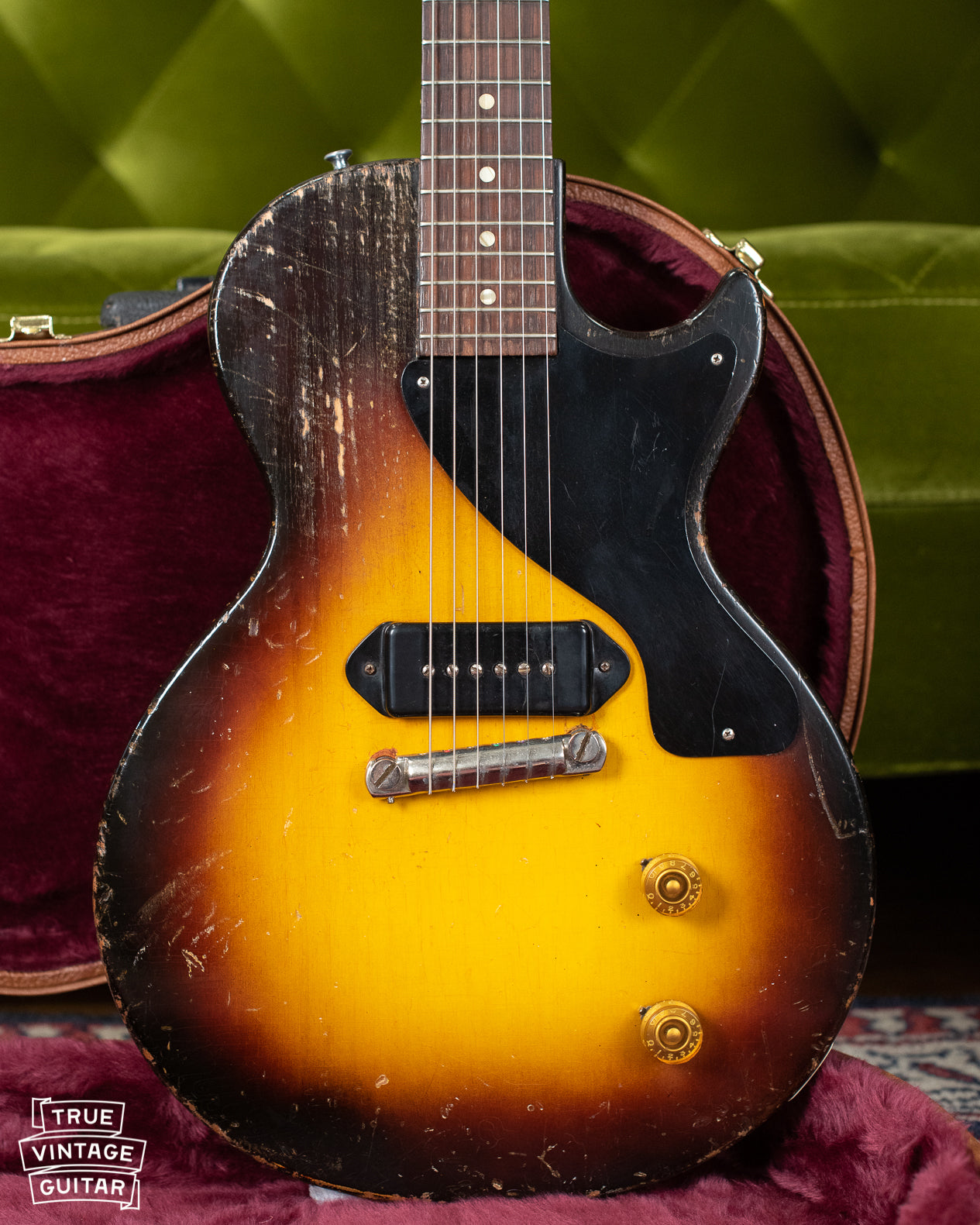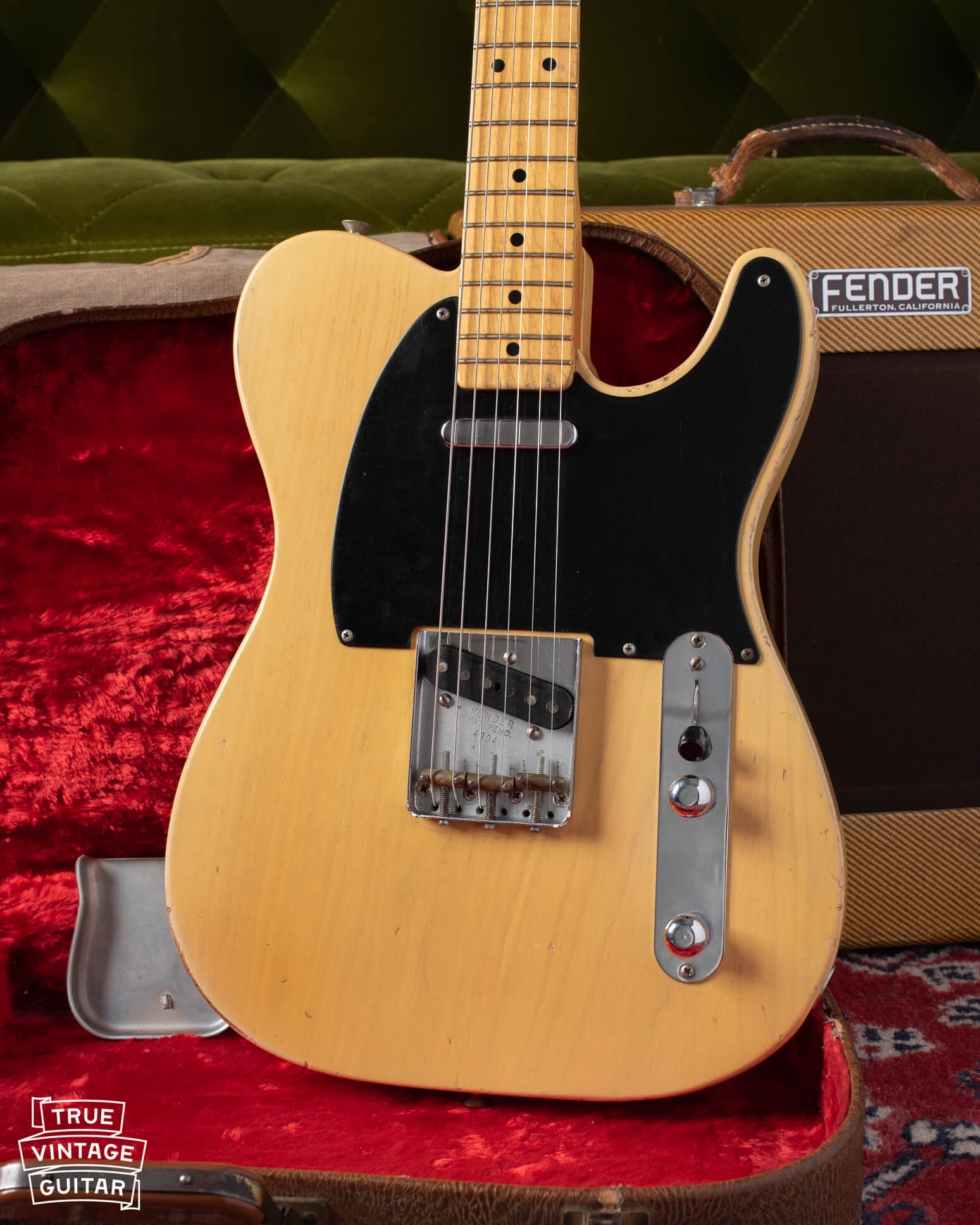Fender guitars in the 1950s and 1960s were offered in standard finishes (Blond or Sunburst depending on the model), but could also be ordered in a what the catalog called Custom Colors for a 5% upcharge. Many players and collectors consider custom color Fenders far more desirable than standard colors, and even value certain rarer colors over more common colors. Olympic White and Blond are two finishes that would be considered non-standard for Jazzmaster and Jaguar models, but they're often misidentified since they both look like a cream white color.
I'm always a Fender guitar buyer, but I'm especially looking for 1950s and 1960s Fender guitars finished in Olympic White or Blond. You can reach out to me here to sell a vintage Fender guitar.
Get help with Fender guitar dating here: How to date vintage Fender guitars.
The most important difference in Olympic White and Blond is that Olympic White is an opaque color, and Blond is a translucent color. Not only that, but Olympic White is typically finished over an Alder body, but Blond is typically finished over an Ash body. Thirdly, Jazzmasters, Jaguars, Jazz Basses, and a few others (excluding Stratocasters and Telecasters) from 1962-1970 should feature a matching painted headstock, while Blond finished guitars will not. Let's check out a few examples.
1963 Fender Jazzmaster Blond

This vintage 1963 Fender Jazzmaster presents as having a cream white finish, so is it Blond or Olympic White? Look closely at the finish to see if there is any of the wood grain lines visible under the finish. If so, this finish is translucent, therefore the color would be called "Blond" if indeed the finish is an original Fender finish. There's a nice dark grain line or knot visible under the finish next to the bass side bridge post so this Fender Jazzmaster is finished in Blond over an Ash body. Also, check out the headstock:

The face of the headstock is finished in a clear lacquer which does not match the finish on the body. This would be correct for a Blond finished Fender guitar since Blond guitars did not have a matching headstock.
1962 Fender Jaguar Olympic White

This 1962 Fender Jaguar features and opaque cream white looking finish. Since there are no grain lines visible through the finish, it's opaque, which means it has to be the Olympic White color over an Alder body. Also, check out the headstock. This headstock features a matching finish color on its face, so it's considered a matching headstock. Since Blond guitars did not feature a matching headstock, this must be Olympic White.

1965 Fender Stratocaster Olympic White

This vintage 1965 Fender Stratocaster can be a tough one! The finish color is a cream white so is it Blond or Olympic White? I was not able to see any grain lines through this finish, so the color is opaque, therefore it must be Olympic White. This one is a bit more difficult since the guitar's clear coat has yellowed to the point that the White finish appears more cream yellow than white. Also, the headstock is not matching on this guitar.

After the introduction of the Jazzmaster in 1958 and the Jaguar in 1962, Fender considered those offset waist guitars to be more premium than the older Stratocaster or Telecaster. The Stratocaster and Telecaster did not receive matching headstocks in the 1960s likely as an attempt to make the offset guitars more premium and therefore worth higher prices. This 1965 Fender Stratocaster headstock does not and should not feature an Olympic White matching headstock.



